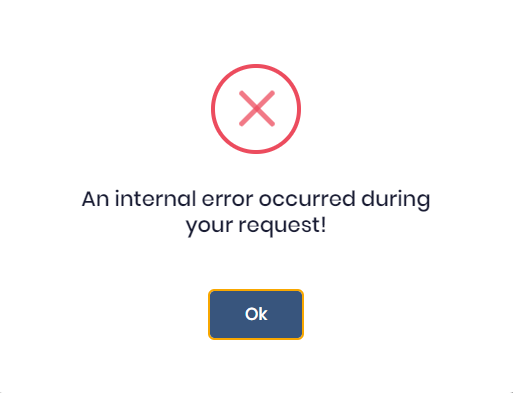Hi,
We're using ABP Zero Template version 10.0.0.0. We added a new method AddNewPermission() in PermissionAppService.cs to create a new permission from the database table.
Below is the sample code
PermissionAppService.cs: public void AddNewPermission(ImportLogData permissionDto) { var permissionProvider = new AppAuthorizationProvider(true); permissionProvider.AddPermission(_permissionDefinitionContext, permissionDto.Message); }
AppAuthorizationProvider.cs: public void AddPermission(IPermissionDefinitionContext context, string permissionName) { var myGroup = context.GetPermissionOrNull("Pages.Reports"); myGroup?.CreateChildPermission(permissionName, new FixedLocalizableString(permissionName)); }
We're unable to access the method in the application. Please review the screenshots below for reference.


<br> Could you help us how to add a new permission from the database table into SetPermissions() in AppAuthorizationProvider.cs?
Regards, Vidyadhar
6 Answer(s)
-
0
Hi, Any updates?
Regards, Vidyadhar.
-
0
Hi Vidyadhar
Sorry for the late reply. What is the value of the
permissionProvidervariable in the AddNewPermission method when the method is called? -
0
Hi oguzhanagir, Thanks for the update, We placed the AddNewPermission() method in the PermissionAppService.cs file, but none of the methods in PermissionAppService.cs are accessible from the application. We added a constructor with IPermissionDefinitionContext: private readonly IPermissionDefinitionContext _permissionDefinitionContext; public PermissionAppService(IPermissionDefinitionContext permissionDefinitionContext) { _permissionDefinitionContext = permissionDefinitionContext; }
Then, we defined AddNewPermission() to add new permissions to an existing permission section: public void AddNewPermission(string permissionName) { var permissionProvider = new AppAuthorizationProvider(true); permissionProvider.AddPermission(_permissionDefinitionContext, permissionName); }
However, after adding this code, we are unable to access any methods in PermissionAppService.cs from the application. If the above issue resloves then we can find the value of permissionProvider variable in the AddNewPermission method Note: Add new permissions dynamically from the database table to the permissions tree section.
-
0
Hi @Vidyadhar,
Could you override
GetAllPermissionsmethods atPermissionManager? You can add your permissions at here. -
0
Hi @Vidyadhar,
Could you override
GetAllPermissionsmethods atPermissionManager? You can add your permissions at here.here is my code public class CustomPermissionManager : PermissionManager { private readonly IRepository<ModulePermission, long> _modulePermissionRepository; private readonly bool _isMultiTenancyEnabled;
public CustomPermissionManager( IIocManager iocManager, IAuthorizationConfiguration authorizationConfiguration, IUnitOfWorkManager unitOfWorkManager, IRepository<ModulePermission, long> modulePermissionRepository, IMultiTenancyConfig multiTenancy) : base(iocManager, authorizationConfiguration, unitOfWorkManager, multiTenancy) { _modulePermissionRepository = modulePermissionRepository; _isMultiTenancyEnabled = multiTenancy.IsEnabled; } public override IReadOnlyList<Permission> GetAllPermissions(bool tenancyFilter = true) { // Fetch default permissions from the base class var basePermissions = base.GetAllPermissions(tenancyFilter); // Add dynamic permissions from the database var dynamicPermissions = RegisterDynamicPermissions(basePermissions); // Combine base permissions with dynamic permissions return basePermissions.Concat(dynamicPermissions).ToList(); } private List<Permission> RegisterDynamicPermissions(IReadOnlyList<Permission> rootPermissions) { // Fetch all dynamic permissions from the database var modulePermissions = _modulePermissionRepository.GetAll().IgnoreQueryFilters().ToList(); var addedPermissions = new List<Permission>(); // Loop through top-level permissions (ParentName is null or empty) foreach (var modulePermission in modulePermissions.Where(mp => string.IsNullOrEmpty(mp.ParentName))) { // Create a top-level permission var parentPermission = new Permission( modulePermission.Name, new FixedLocalizableString(modulePermission.DisplayName ?? modulePermission.Name), modulePermission.Description != null ? new FixedLocalizableString(modulePermission.Description) : null, _isMultiTenancyEnabled ? MultiTenancySides.Host | MultiTenancySides.Tenant : MultiTenancySides.Tenant ); addedPermissions.Add(parentPermission); // Add child permissions recursively AddChildPermissions(parentPermission, modulePermissions, modulePermission.Name); } return addedPermissions; } private void AddChildPermissions(Permission parentPermission, List<ModulePermission> modulePermissions, string parentName) { // Fetch child permissions of the given parentName var childPermissions = modulePermissions.Where(mp => mp.ParentName == parentName).ToList(); foreach (var childPermission in childPermissions) { // Create the child permission var createdChild = parentPermission.CreateChildPermission( childPermission.Name, new FixedLocalizableString(childPermission.DisplayName ?? childPermission.Name), childPermission.Description != null ? new FixedLocalizableString(childPermission.Description) : null, _isMultiTenancyEnabled ? MultiTenancySides.Host | MultiTenancySides.Tenant : MultiTenancySides.Tenant ); // Recursively add children of the current child AddChildPermissions(createdChild, modulePermissions, childPermission.Name); } }} and [DependsOn( typeof(DemoApplicationSharedModule), typeof(DemoCoreModule) )] public class DemoApplicationModule : AbpModule {
public override void PreInitialize() { //Adding authorization providers Configuration.Authorization.Providers.Add<AppAuthorizationProvider>(); //Adding custom AutoMapper configuration Configuration.Modules.AbpAutoMapper().Configurators.Add(CustomDtoMapper.CreateMappings); Configuration.ReplaceService<IRepository<ModulePermission, long>, ModulePermissionRepository>(); Configuration.ReplaceService<PermissionManager, CustomPermissionManager>(DependencyLifeStyle.Singleton); } public override void Initialize() { IocManager.RegisterAssemblyByConvention(typeof(DemoApplicationModule).GetAssembly()); }} but application run then get only administration section under not display User ,role and other

-
0
Hi @[email protected],
We are planning to create a blog post about dynamic permissions. Please stay tuned.



